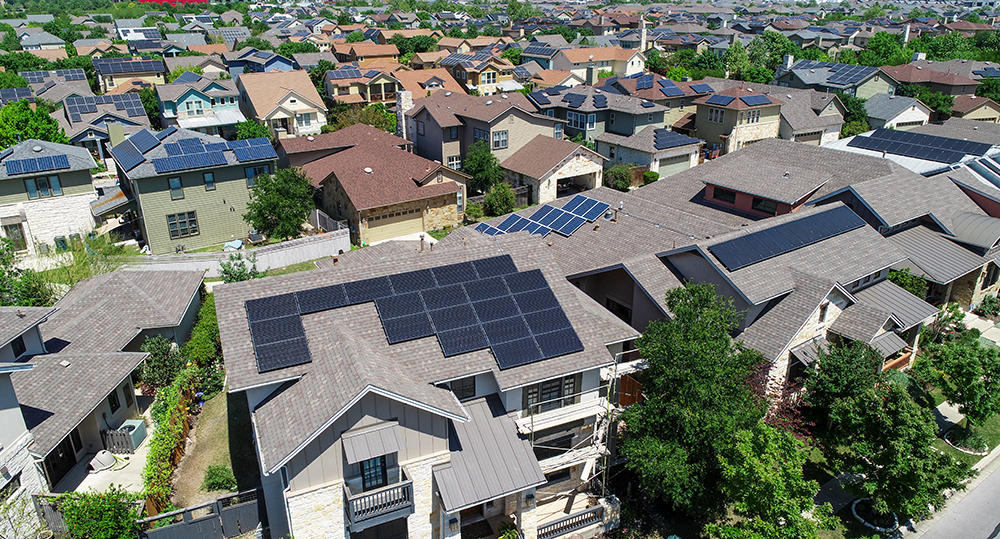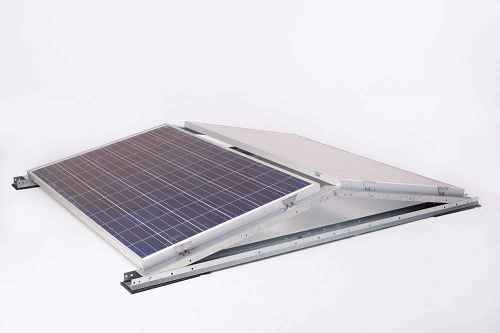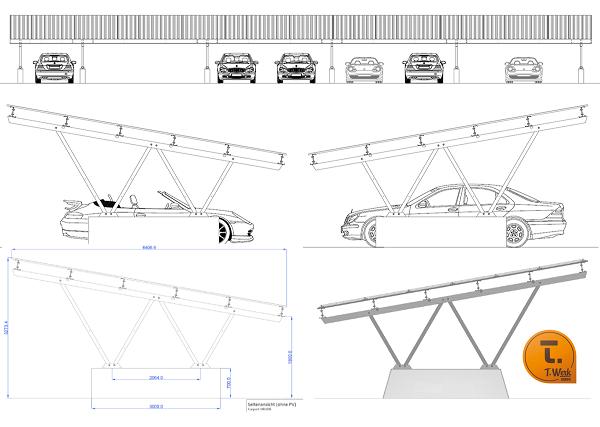Solar power for the energy turnaround – The One Million Roofs program – 100 percent of electricity from renewable sources by 2030 – One million roofs with photovoltaics for Austria
With the future Renewable Energy Expansion Act (EAG), the Austrian Ministry for Climate Protection (BMK) also wants to simplify subsidies for photovoltaic systems on roofs. Climate Protection Minister Leonore Gewessler presented details of the planned measures on Thursday, September 10: Starting in 2021, the new Renewable Energy Expansion Act (EAG) will also make subsidies for photovoltaics (PV) much more efficient. Additional approaches, more transparency and a clearer as well as more accessible funding system are at the center of this.
One million roofs
PV systems should be installed primarily on buildings or structural facilities (e.g. parking lots, noise barriers, operating facilities). The big advantage lies in the infrastructure already in place, such as for grid connections. However, many roof surfaces are not yet suitable for PV. In this sense, an appropriate accompanying program is foreseen to improve the mobilization of rooftop installations. In addition, a subsidy program for innovative systems (roof-integrated systems, building-integrated systems, etc.) will be made available starting next year.

By 2030, 100% renewable energy is to be achieved in Austria with an addition of eleven gigawatts of photovoltaics – @shutterstock | Roschetzky Photography
The One Million Roofs program
- Addition of 11 GW of photovoltaics by 2030 and the equivalent of 11 TWh of electricity generation.
- In the long term, there is a PV potential of around 8 TWh for buildings – at least 50% of which should be realized by 2030.
- One roof corresponds to a reference PV system of a “typical” single-family house with a system output of around 4 kWp.
- Goal: solar power for all.
- This is the current equivalent of about one million roofs
The ambitious One Million Roofs program is designed to make it easier to equip roofs and buildings with photovoltaic systems. Thanks to modern photovoltaic systems, more and more roofs and buildings are being transformed into sustainable energy suppliers. Additional incentives and more effective funding options are now driving the expansion forward.
“The energy transition is one of the most important projects in the next ten years. To achieve this, we all have to pull together. With a good subsidy system and a stable legal framework, we will ensure that solar power can be produced on one million roofs in the future,” says Gewessler.
Sustainable investments in photovoltaics make a significant contribution to the energy transition and bring Austria closer to the long-term goal of generating 100 percent of its electricity from renewable sources by 2030.
“The new Renewable Expansion Act will be an important basis for this. With it, we are creating a new support system with continuous funding. And we will ensure that every household is allowed to produce at least as much electricity as it consumes,” Gewessler continues.
More planning security and transparency
Currently, two different agencies are responsible for promoting PV systems – the Climate and Energy Fund and the Green Electricity Settlement Agency. The new EAW, on the other hand, focuses on a single new grant processing agency (EAW processing agency). This will provide funding on several dates per year, ensuring that funding can be provided on an ongoing basis. In addition, access to the grid is facilitated: the connection conditions for small systems provide that the entire electricity demand of the household can be covered by photovoltaics without incurring additional costs.
Furthermore, annual monitoring and far-reaching prescription options are planned. The necessary transparency on the part of the network operators will also be anchored in the EAEC. To increase the focus on buildings and landfill sites, sealed or otherwise degraded land, a discount of about 30 percent is provided for facilities on green and agricultural land. The collected expansion progress of Austrian photovoltaic systems will also be openly, comprehensibly and transparently visible online via a website.
Energy Communities
Another important lever for the expansion of PV systems on roofs will be so-called “renewable energy communities”. They enable the shared use of locally produced renewable energy – for example, in the neighborhood or in the settlement. For example, the PV system on the fire department’s roof can be used to power the on-site school.
Photovoltaic expansion on roofs needs obligation and further adaptations at state level
The Federal Association Photovoltaic Austria demands a photovoltaic duty for new buildings. The “One Million Roofs Program” can make an important contribution to the energy turnaround. Photovoltaic expansion on roofs needs commitment and further adaptations at the state level.
Herbert Paierl, Chairman of the Board of the Federal Association Photovoltaic Austria (PVA) was present at the press conference and represented the voice of the industry: “We welcome the presented ‘One Million Roofs Program’ to accelerate the expansion on Austria’s roofs. To achieve the PV boom we need, we need to release the brakes, and to do that we need state and local governments on board as well as the federal government. This is where essential competencies lie in order to make building and land use possible in the first place. This is where appropriate action needs to be taken for the solar revolution.”
Utilization of roof potential requires PV-friendly framework conditions
The “One Million Roofs Program” is a clear mandate to the federal states to take important further steps here. Although Austria, with 2.4 million buildings, supposedly has enough roof space for the production of solar power by means of photovoltaic (PV) systems, a recent analysis by Hubert Fechner shows that of the building stock under the current legal framework, only a portion – just under 20 percent – can actually be used. Technical, economic, environmental, social and, above all, bureaucratic factors dramatically reduce the roof potential. Consequently, only every fifth building can be equipped with a PV system. Under the current framework conditions, this means that just half of the “One Million Roofs Program” can be implemented. This represents four gigawatts (GW) of installed PV capacity, or 36% of the targeted 11 GW of PV additions by 2030. In order to make the fundamentally high potential of roof areas in Austria usable, existing framework conditions must be “dusted off” and made more PV-friendly, and better information bases must be created. Consistent removal of barriers at the state level is essential. “In any case, the rooftop potential must be fully utilized and we will have to develop the remaining capacity with other areas. This requires increased dual use of sites such as traffic or open spaces, as well as the use of innovative PV applications on noise barriers or as floating PV,” says Paierl, explaining the extensive potential uses of PV. The planned accompanying program to improve the mobilization of roof systems, special funding pots for innovative systems, and annual monitoring are therefore important measures for achieving the goal.
PV obligation would create another 20 percent of additions
Without a mandatory installation of PV systems on newly constructed buildings, the goals of the “One Million Roofs Program” are therefore hardly achievable. “Similar regulations, such as connection to the water or sewage supply or compliance with a certain construction standard, already exist for new building construction. These specifications are to be completed with the obligatory installation of PV systems. Vienna is setting a good example here,” Paierl sums up. Over the next 10 years, 250,000 new buildings will be constructed (assumption: continuation of current trend). With an Austria-wide PV obligation in new construction alone, a PV capacity of 2.1 GWp can be installed by 2030, which corresponds to 20% of the necessary PV expansion by 2030.









